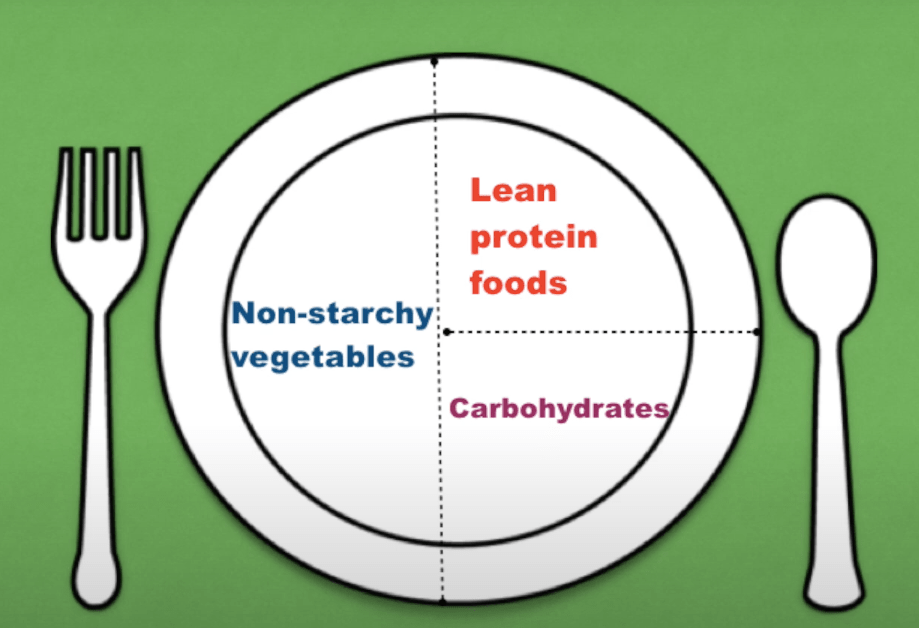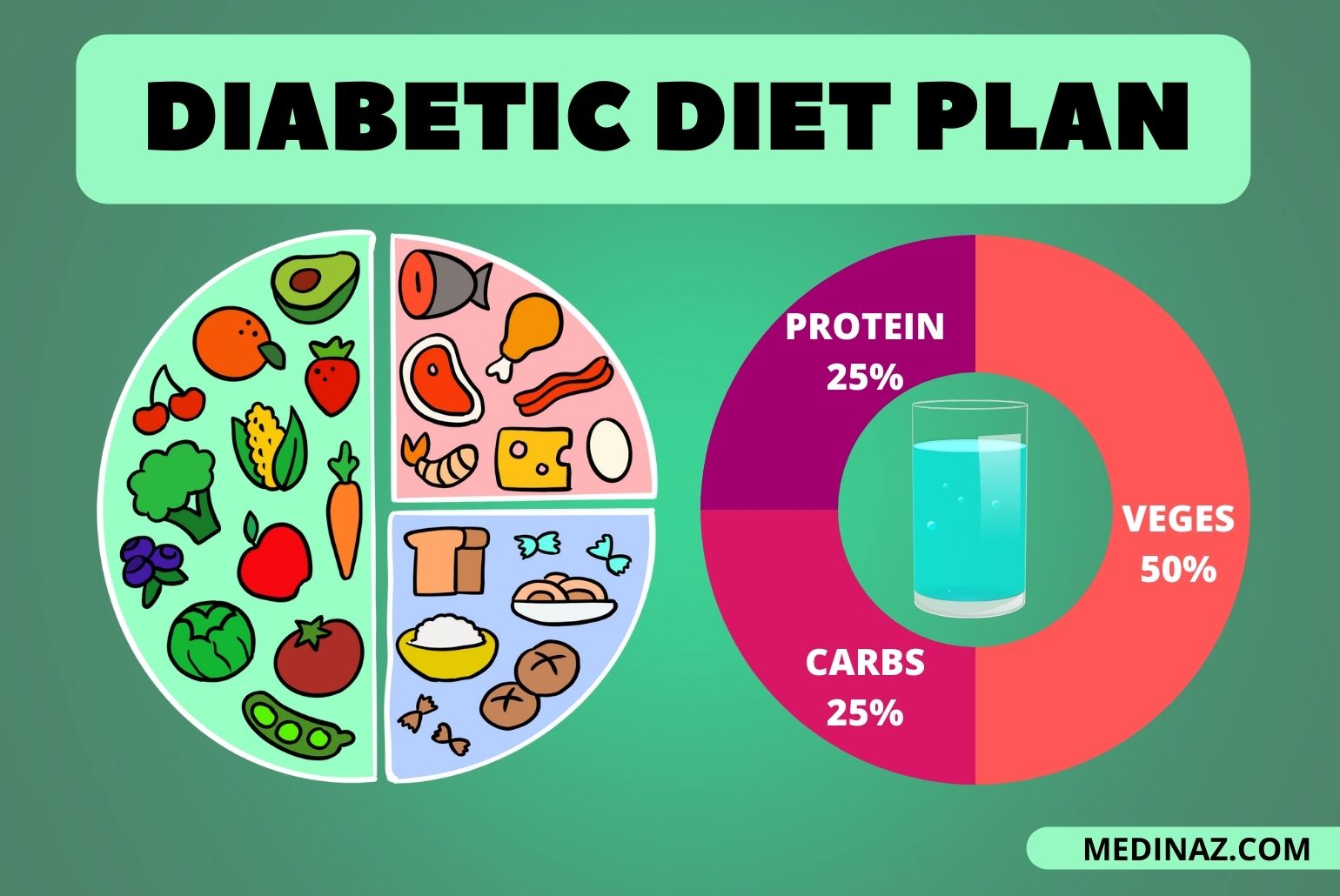Diabetes diet plan doesn’t need any rocket science, or calculations. All you need is a plate
Diabetes is a global health concern. About 422 million people worldwide have diabetes and the number of cases have been increasing over the past few decades. Diet in diabetic patients always play an important role in managing it.
Being in diabetic and prediabetic range and choosing the best foods can be tough.
So in this blog we are mainly going to focus on diabetes plate method and what are the foods that you can include:
In this Diabetes Plate Method, you can perfectly customize your meals with a healthy portion of vegetables, protein and carbohydrates. It doesn’t need any rocket science, or calculations. All you need is a plate
What is diabetic plate method?
To start out, you will need a preferably 9-inch plate. Now as shown here in the diagram, imagine two lines drawn on your plate breaking it up into three sections:

First fill half of your plate with non-starchy vegetables, one quarter with lean protein foods, and then the last quarter of the plate with carbohydrates. You can Top it off with a glass of water or another zero calorie drink.
What can you have in Non-starchy vegetables?
Non-starchy vegetables as the name implies have very less amount of starch. Non starchy vegetables occupying half of your plate means there is going to be more fiber and less carbohydrates. This will help you with weight loss and will help in lowering blood sugar levels.
They are very good for health as they are high in vitamins, minerals, dietary fiber and other important nutrients called phytochemicals.
Here is the list of common non-starchy vegetables:
- Amaranth
- Artichoke
- Asparagus
- Broccoli
- Beets
- Brussels sprouts
- Carrots
- Cauliflower
- Cucumber
- Green beans
- Mushrooms
You can also include these non-starchy vegetables in Diabetes Diet Plan:
- Cabbage
- Chayote
- Daikon
- Eggplant
- Fennel
- Gourds (bitter melon)
- Greens
- Collard
- Kale
- Mustard
- Jicama
- Kohlrabi
- Okra
- Onions
- Pea pods
- Sugar snap peas
- Peppers
- Rutabaga
- Summer squash
- Tomato
- Turnips
- Water chestnuts
What are the best protein sources you should eat in diabetes?
Protein is one of essential macronutrients. Our body uses protein to build, repair, and maintain most of your body’s tissues and organs. Proteins are also necessary for immune system function and help some additional physiological processes as well.
Foods high in protein such as fish, chicken, lean beef, soy products, and cheese are all considered as “protein foods.”
However, Proteins from animal sources contain saturated fat. This saturated fat may increase your risk of heart disease. Whereas Lean proteins are lower in fat and saturated fat, making them a healthier choice.
But you should also be mindful that some plant-based protein foods like beans and legumes are also high in carbohydrates.
So here are some examples of lean Proteins from animal sources:
- Cheese and cottage cheese
- White-meat poultry such as Chicken, turkey, and eggs
- Fish like salmon, sardines, tuna, cod, tilapia, or mackerel
- Shellfish like shrimp, scallops, clams, mussels, or lobster
- The loin cut will have less fat than other cuts of meat. Basically loin means lean. Choose lean beef cuts such as chuck, round, sirloin, flank, or tenderloin
- Lean pork cuts such as center loin chop or tenderloin
- Lean deli meats
Plant-based sources of proteins are:
- Beans
- Peas
- Quinoa
- Sesame, pumpkin, chia and flax seeds
- Lentils, hummus, and falafel
- Nuts and nut butters
- Tofu, tempeh Edamame
What type of carbohydrate food you should eat in diabetes?
Carbohydrates provide energy to your body and have the greatest effect on blood sugar. Choosing healthiest carb-containing foods in your diabetes diet plan is very essential.
So Limiting your portion of carbohydrate foods to one quarter of your plate can help keep blood sugars from rising too high after meals.
Now let’s see some Examples of carbohydrate foods:
- Try incorporating whole, unprocessed carbohydrates over the refined options.
- Whole grains such as brown rice, oats, quinoa
- Starchy vegetables such as acorn squash, green peas, pumpkin, and yam.
- Beans and legumes such as black, kidney, pinto, and garbanzo beans
- Fiber rich Fruits, berries and dried fruit
- Dairy products like milk, yogurt, and milk substitutes (i.e. soy milk)
Whole grain products like bread, pasta, tortillas
Along with all these foods you can choose water or a low calorie drink like club soda or diet soda to finish your meal.
Conclusion
Everyone’s body responds differently to different types of foods and diets, so there is no single “magic” diet for diabetes. But you can follow a few simple guidelines to find out what works for you to help manage your blood sugar.
A Visual Learning Platform





